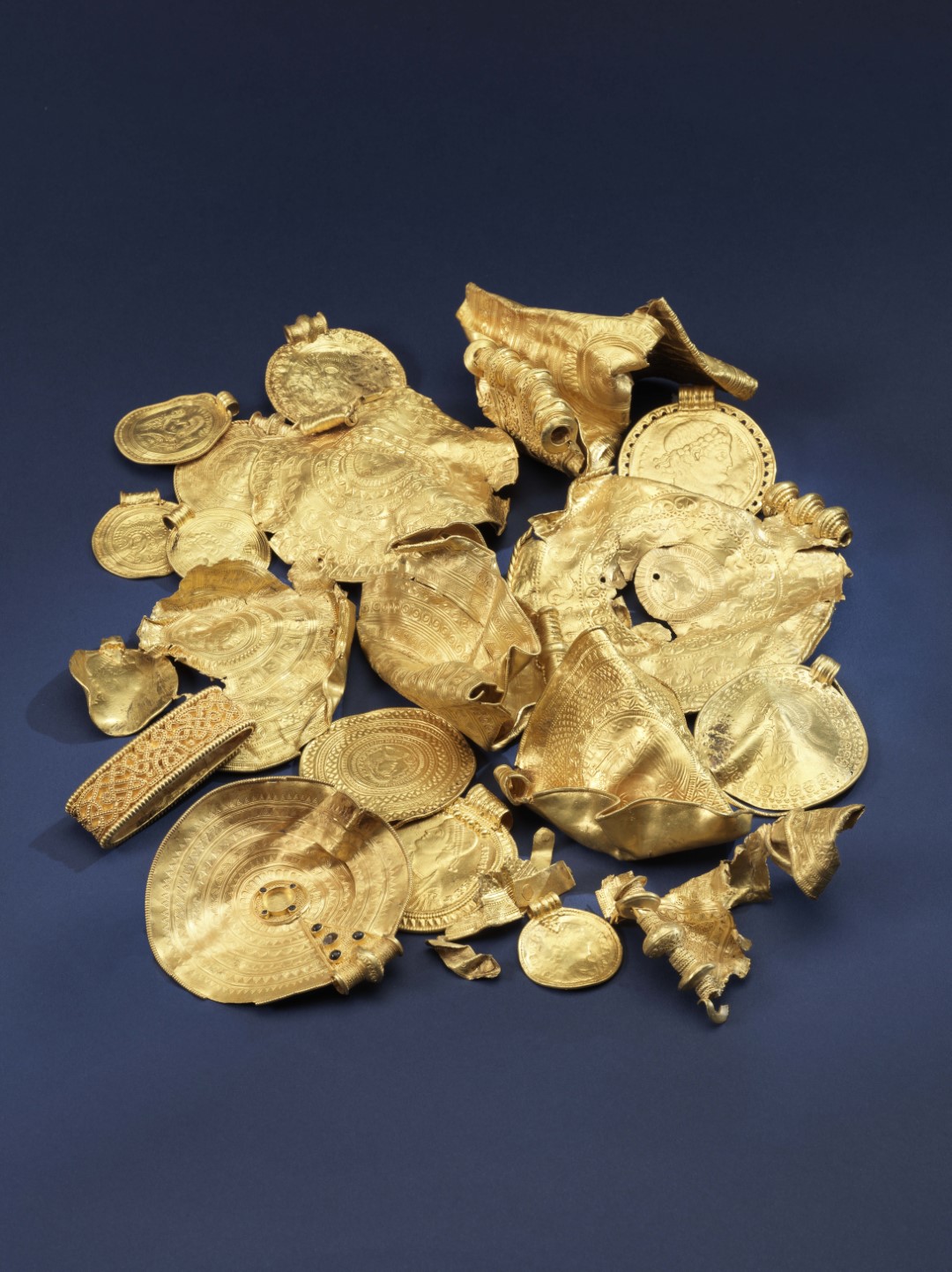Zajímavý článek 
Chtěl bych to taky jednou najít 
Detector study of Roman gold treasure discovery reveals network of European elites
Categories: Nálezy nejenom s detektorem ve Skandinávii
The farm in the Jute town of Vindelev is believed to have been the home of a prominent international figure. Newly published research on Denmark's largest hoard of Roman gold coins and bractates demonstrates the strong influence of the small settlement and its connection to elite Roman cities.
The hoard consists of 23 gold objects from the Migration of Nations period (375-568 AD) discovered on a farm in Vindelev near Jelling using a metal detector in December 2020. It contains 13 Nordic gold bractates with engraved figures of Norse mythology from the 5th century, which hold several "bests":
One as the largest brakteat in the world, another contains the oldest known runic reference to Odin. In addition, a granulated gold sword fitting and four gold Roman medallions from the 4th century AD were discovered in the set, which have been adapted into pendants.
The medallions were issued by Constantine the Great (306-337 AD), Constans (337-350 AD), Valentinian I (364-375 AD) and Gratian (367-383 AD). It is therefore extremely unlikely that they were granted to noble personages in Vindelevo. Moreover, they had additional and outside of the Roman Empire loops attached to their strings so that they could be worn as pendants. The medallions therefore probably changed hands several times before ending up in Vindelevo.
According to research leader Helle Horsnæs, the medallions may have been part of a bride price or given as gifts to important European men and women. Large gold medallions were usually used as gifts from the imperial house to leading Roman senators and generals. To find all four gold medallions in a single set is truly exceptional - nothing like it has ever been found before. The owner must therefore have been a very important personage with great influence across Europe at the time.
"We have other exciting gold finds in the East Jutland area, but the Vindelev is the greatest in all parameters. At the moment, we have no indication that Vindelev is a centre of power, so it is surprising to usthat we're finding objects that show not only local influence but also European connections," he says. "This really puts Vindelev on the European map and the treasure owner at the highest European level," she added.
Moreover, one of the medallions was struck with the exact same mintmark as the medallion found in Zargozyn, Poland. Both medallions were struck in one Roman Empire workshop, then both were identically turned into pendants in another workshop and then went in different directions across Europe: "It shows that the European network at this time was widely branched and the European elite was already interconnected," explained Helle Horsnæs, who published her research in the international scientific journal Numismatic Chronicle.
Roman Nemec
Sources: via.ritzau.dk, natmus.dk

The Vindelev Treasure

at the exhibition

parts of the treasure on display
, avers. Právě tento nese stejné znaky razidla jako medailon v Polsku.jpg)
Roman medallion from the Vindelev Treasure (X15), obverse. This particular one bears the same hallmarks as the medallion in Poland

Reverse of medallion X15. This one bears the same hallmarks as the identical medallion in Poland

Helle Horsnæs



The article is included in categories:
- Archive of articles > Archaeology > Finds and rescue research abroad > Nálezy nejenom s detektorem ve Skandinávii
Post
Nádhera. Zajímala by mě ryzost takového zlata, dělá se na to nějaká expertíza? nebo to neřeší?
Ryzost, určitě bude FULL 24karátů.  Pokud šlo o vysoký level, ty bys jim to pajcnul? To bys asi přišel o hlavu.
Pokud šlo o vysoký level, ty bys jim to pajcnul? To bys asi přišel o hlavu. 







